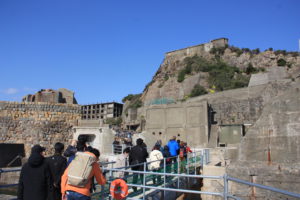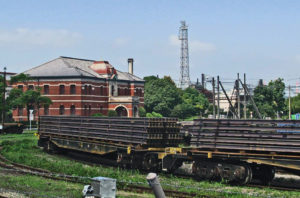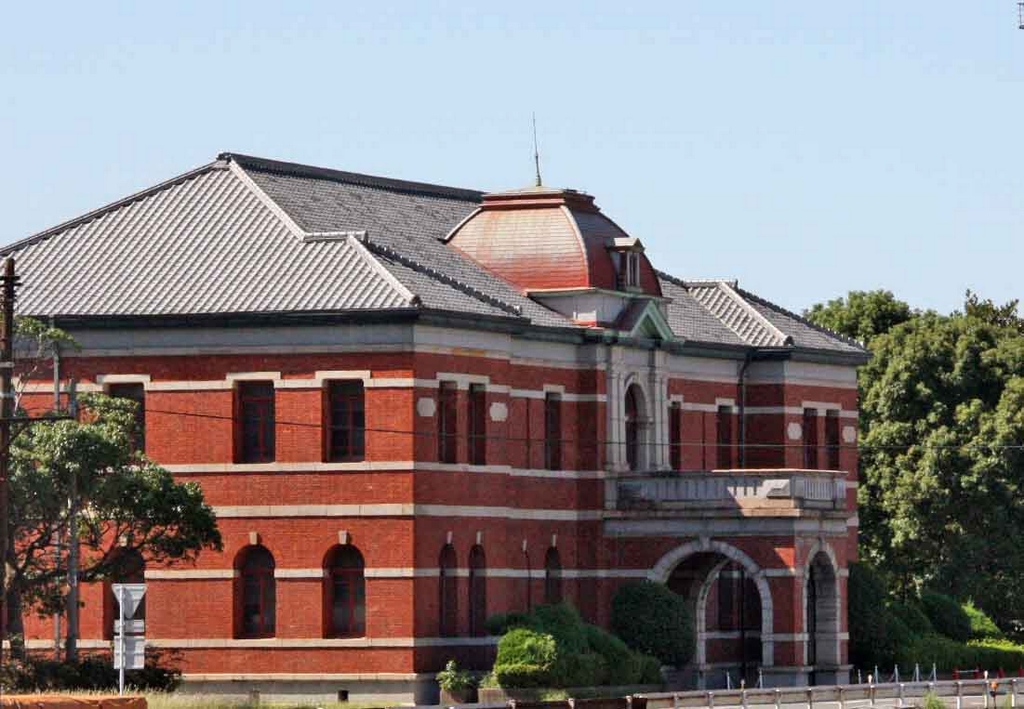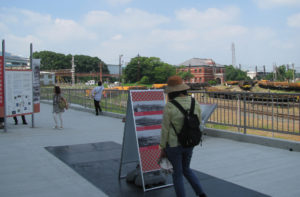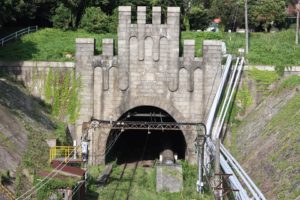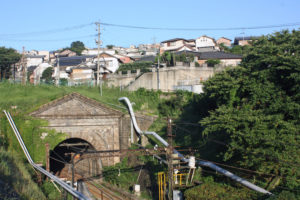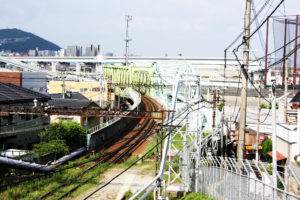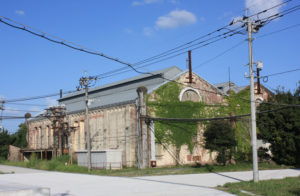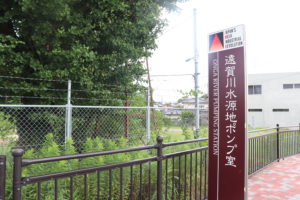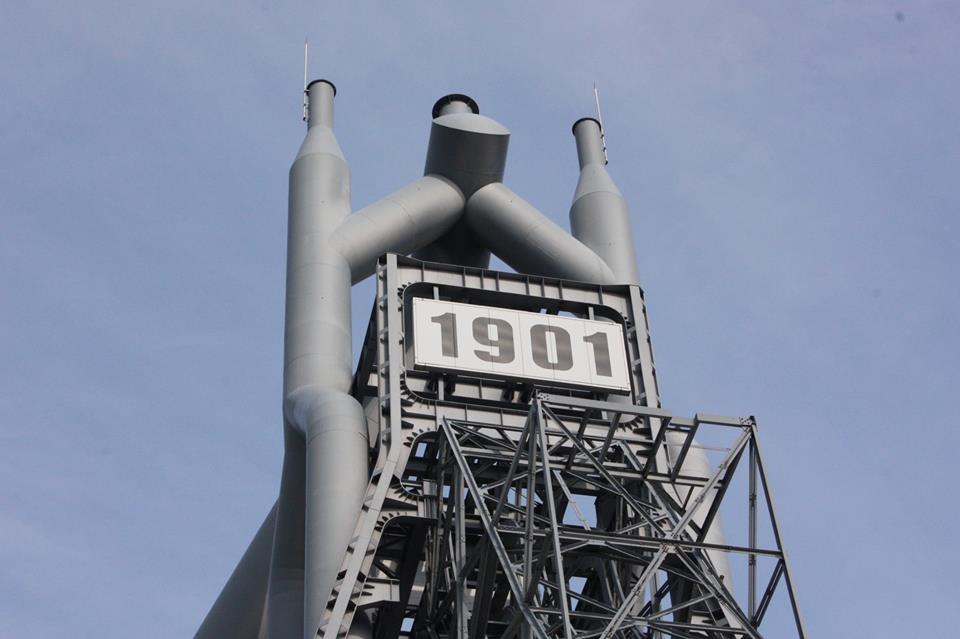Former Pattern Shop / Shipyard History Museum, in Nagasaki
The Former Pattern Shop has been registered on UNESCO World Heritage
as Sites of Japan’s Meiji Industrial Revolution. The Former Pattern Shop was built in
1898 to produce wooden patterns for castings and is the oldest factory building in the
shipyard. It is a two-storied brick building with a timber roof truss. There is a U-shaped
rail on the ceiling to transport materials. The building was refurbished to the Shipyard
History Museum in 1985 and is open to the public.
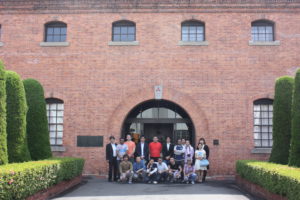 |
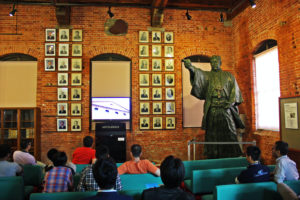 |
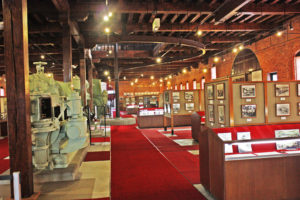 |
Hashima Coal Mine / Gunkan-jima island
Hashima coal mining island is an artificial reclaimed island and the site of Japan’s first major
undersea coal exploitation (1890) pioneered by Mitsubishi – and host to one of the world’s
most extraordinary former mining communities. Hashima Island is located 3 km southwest of
Takashima, and it was the success of Takashima that led Mitsubishi to purchase this island – both
islands giving access to the same undersea coal deposit. Now Hashima is a ruin called “Gunkanjima”,
so called after its resemblance to the silhouette of a battleship.
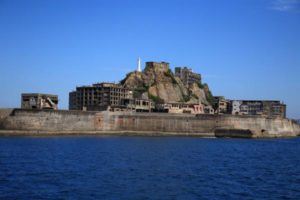 |
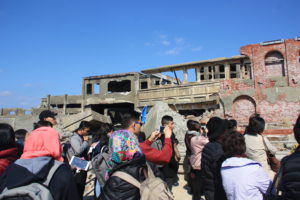 |
Giant Cantilever Crane
The Giant Cantilever Crane is the first electric-powered crane of its type in Japan, imported from
Scotland in 1909, which is the oldest surviving one in operation in the world. It can still lift a load
of 150 tons and is used to ship heavy goods.
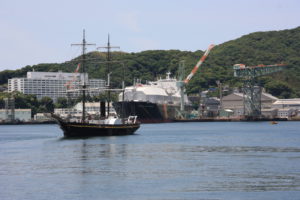 |
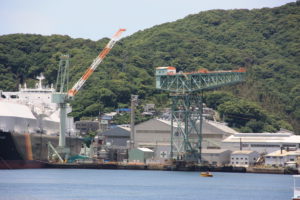 |
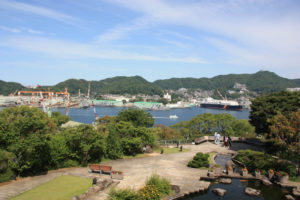 |
Mietsu Naval Dock, in Saga
Before Meiji Restoration, the Mietsu Naval Dock served as a venue for naval drilling
and maintenance of Western-style ship, as the naval base of Saga Clan. Japan’s first
practical steam ship, the Ryofu-maru was constructed there in 1865.
The site has been registered on UNESCO World Heritage, Site of Japan’s Meiji
Industrial Revolution.
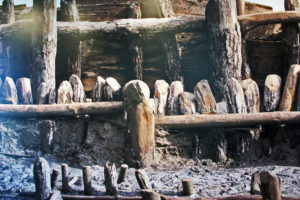 |
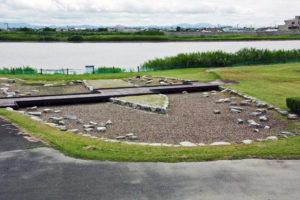 |
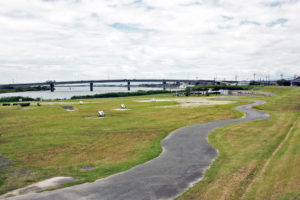 |
Tsukiji Reflectance Furnace, Saga
This is the Japan’s first constructed Reflectance Furnace. In the late Edo period when the
necessity of maritime defence increased, the Saga clan built the Tsukiji Reflectance
Furnace for making cast iron-made Western cannons and completed in 1850. And then,
the cast iron cannon was manufactured the first time in Japan in 1851. The reflectance
furnace was greatly contributed for initial stage of Japan’s Industrial Modernization.
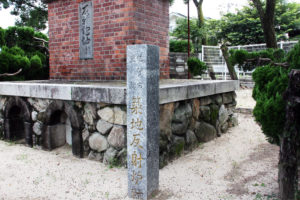 |
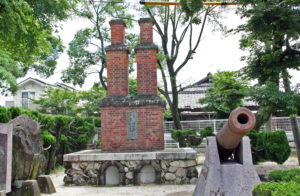 |
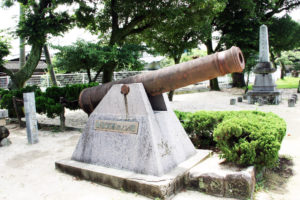 |
First Head office of the Steel Works, in Kitakyushu-city
The the building for the Head office of the Imperial Steel Works was constructed in 1899,
two years before commencement of Japan’s Steel Industry.
The design of the building is a harmony of European and Japanese architectural styles.
The construction of the structure below the roof is a European style and uses red bricks
for the outside walls.
|
|
|
|
Aiming to symbolize a Good future for Japan, the roof was designed with a traditional
Japanese triangular shape and Japanese tiles were used to complete the roof.
The building was initially used as a Head office until 1922, however with the expansion
of production facilities, the Head Office was moved to another place due to lack of space.
After that, the building was used for various purposes such as a Research and Developing
Center for Steel Products.
Kurogane Railway, in Kitakyushu-city
Dedicated Railway for Yawata Steel Works. The railway connected between Yawata and
Tobata, construction work took three years, and completed in 1930. The most difficult
and hard work was making Miyatayama tunnel with a total length of 1180 m due to suffering
from floods. The gates of the Miyatayama tunnel are decorated with stately designs.
|
|
|
|
Onga River Pump Station, in Nakama
Built in 1910 on the east bank of the Onga River. It served, and still serves, to deliver
industrial water to Yawata via an 11.4 km pipeline. This supply is integral to the steel
production process and was necessary to cope with the 1st phase expansion of the
Imperial Steel Works. The site has been registered on the UNESCO World Heritage,
Sites of Japan’s Meiji Industrial Revolution
|
|
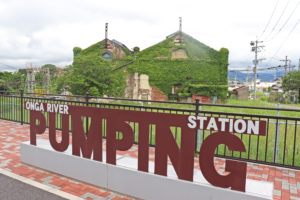 |
|
Minami Kawachi-bashi bridge, in Kitakyushu-city
This shape and color really harmonize with nature and become a symbol of the Iron town Yahata.
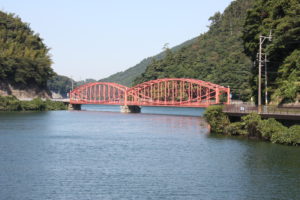 |
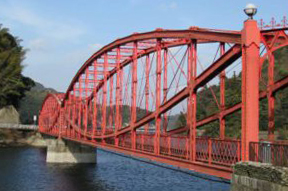 |
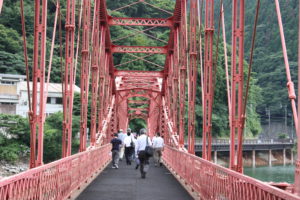 |
Higashida No.1 Blast Furnace, in Kitakyushu-city
Blast Furnace is a Steel plant for making the pig iron from iron ore and coke.
Higashida No.1 Blast Furnace is only the Blast Furnace in the world which preserved
as it was.
The birth place where Japan’s steel industry began in 1901. It contributed greatly to the
development of the Japanese steel industry and was used until 1972, and has been preserved
just as it was. The big signboard at the top of the Blast Furnace displaying “1901” indicates
the year in which the Blast Furnace commenced operation.
 |
|
|
Equipment and tools which were actually used are exhibited in the square, and you can see
the iron-making process from the raw material (ore and coke)to production of pig iron.

